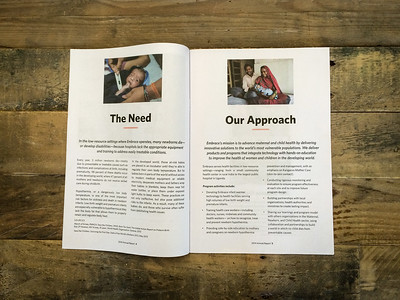In my last post, I wrote about potential missed opportunities for donor engagement. You may think you’re practicing donor engagement by sending thank you letters and an e-newsletter, but is the content actually engaging? It’s often formulaic and just downright dull.
Many nonprofits send all their donors the same appeal and thank you letters. In these letters, they never thank a donor for their past support or acknowledge they’re a monthly donor.
If that’s not bad enough, many of these letters use vague and impersonal language and even worse, jargon.
It sounds obvious, but your donor engagement should be engaging. If it’s not, it’s time to move away from generic and impersonal communication. Your donors deserve better. Here are a few suggestions to help you improve your donor communication.
Segment your donors
Your donors aren’t the same, so they shouldn’t all get the same letter or other types of communication. Segment your donors into different groups as much as you can. At the very least, create different letters for new donors, repeat donors, and monthly donors. You can also personalize letters to lapsed donors, event attendees, volunteers, etc.
I emphasize segmenting your donors a lot in my posts because it’s so important. Both because it allows you to send your messages to the right audience and you can personalize those messages. Donors like it if you recognize their past giving or anything that shows them this is more than a generic, one-size-fits-all message.
Also, please stop sending Dear Friend letters. You’re not being a good friend if you don’t even use your donors’ names.
I know this will take more time, but it’s worth the investment. So is a good CRM/database to help you with this. Your donors will feel appreciated and are more likely to give again, possibly at a higher level.
Use language your donors will understand
If you use vague, generic language and jargon, you’re going to instantly bore and/or confuse your donors. Most of your donors don’t have a medical or social services background. They don’t use terms like food insecurity, at-risk populations, and underserved communities – and neither should you. Stay away from insider language.
Connect with your donors by using language they’ll understand. Instead of writing about food insecurity, give an example of a single mother choosing between buying groceries and paying the heating bill.
What do you mean by at-risk or underserved? Are high school students less likely to graduate on time? Do residents of a certain community not have good health care nearby? Is housing too expensive? Get specific, but at the same time, keep it simple. Also, terms like at-risk and underserved undermine your clients/community. Remember, these are human beings you’re writing about.
A great way to break free from generic language and jargon is to tell stories. Most people respond better to a human-interest story than a bunch of boring statistics.
Make time for improvement
You may be between fundraising campaigns right now and have a little more time (or maybe not). If so, work on segmenting the donors in your database, if you haven’t already done that. Segment your donors on an ongoing basis. For example, some of your single-gift donors may have upgraded to monthly. If you can do this after every campaign, you should have fairly up-to-date information on your donors.
In addition, dust off those templates and freshen up your appeal letters and thank you letters. Situations throughout the world keep changing and your communication needs to be relevant. Create letter templates for different donor groups and replace your vague, generic language with something clear, conversational, and specific.
You can also use this time to add new stories to your story bank or start putting one together, if you don’t already have one.
Have someone outside of your organization, a friend or family member, look at your messages. Something that’s clear to you may confuse others.
Create communication that shows your donors how much you appreciate them by recognizing who they are and giving them engaging content they can relate to.











